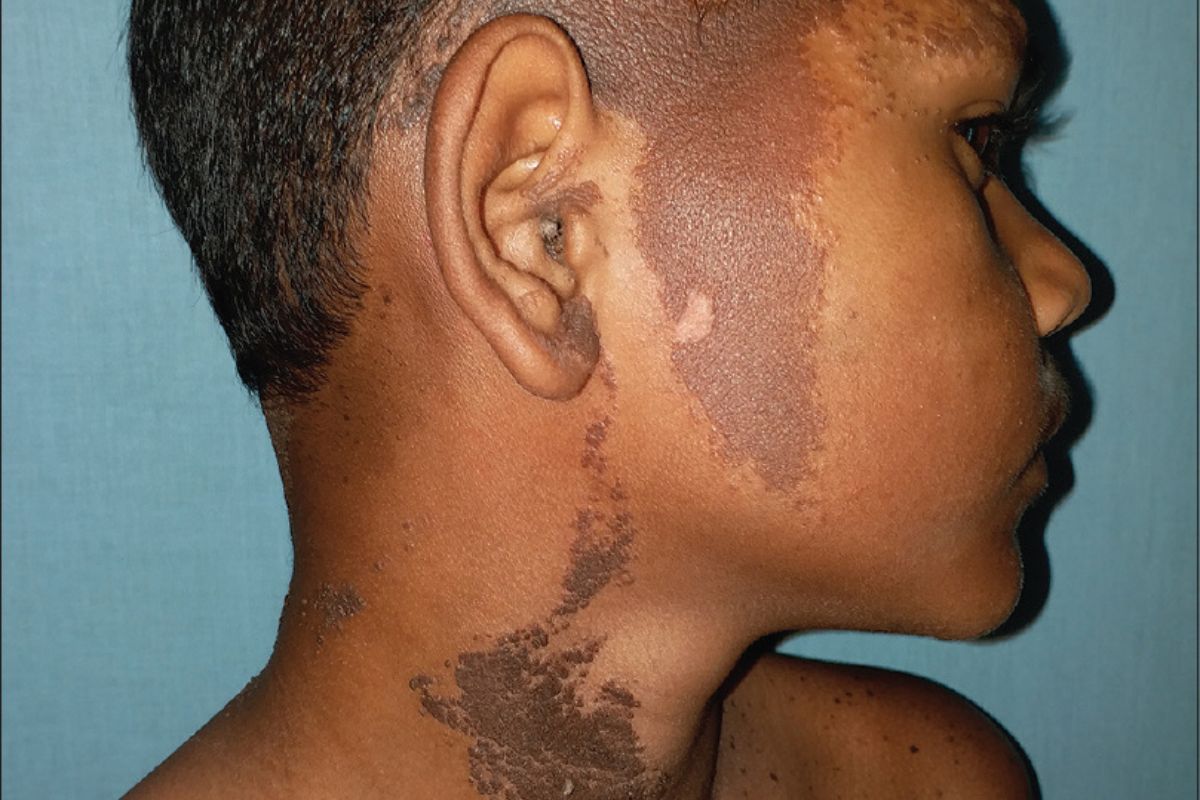
Schimmelpenning Syndrome is a rare genetic disorder that affects the skin, eyes, and brain. What causes Schimmelpenning Syndrome? This condition is caused by a mutation in the HRAS gene, which plays a role in cell growth and division. People with Schimmelpenning Syndrome often have distinctive skin lesions, such as sebaceous nevi, which are present at birth. These lesions can appear on the scalp, face, or neck. Other symptoms may include developmental delays, seizures, and eye abnormalities. Diagnosing Schimmelpenning Syndrome typically involves a combination of clinical evaluation, genetic testing, and imaging studies. Treatment focuses on managing symptoms and may involve a team of specialists, including dermatologists, neurologists, and ophthalmologists. Understanding this complex condition can help those affected receive the care they need.
Key Takeaways:
- Schimmelpenning Syndrome is a rare condition with skin, eye, and neurological effects. It's caused by genetic mutations and requires a team of specialists for management.
- Early diagnosis and multidisciplinary care are crucial for individuals with Schimmelpenning Syndrome. Research and support groups offer hope for better understanding and treatment.
What is Schimmelpenning Syndrome?
Schimmelpenning Syndrome, also known as Schimmelpenning-Feuerstein-Mims syndrome, is a rare congenital disorder. It primarily affects the skin, eyes, and central nervous system. This condition is characterized by the presence of a large sebaceous nevus, which is a type of birthmark. Let's dive into some fascinating facts about this unique syndrome.
Key Characteristics of Schimmelpenning Syndrome
Understanding the primary features of Schimmelpenning Syndrome helps in recognizing and diagnosing the condition.
- Sebaceous Nevus: The hallmark of Schimmelpenning Syndrome is the presence of a sebaceous nevus, which is a yellowish, hairless patch of skin.
- Skin Abnormalities: Individuals may have other skin abnormalities, such as papillomas or epidermal nevi.
- Eye Issues: Eye problems, including colobomas and cataracts, are common in those with Schimmelpenning Syndrome.
- Neurological Problems: Seizures and intellectual disabilities can occur due to central nervous system involvement.
- Skeletal Anomalies: Some individuals may have skeletal abnormalities, such as scoliosis or limb asymmetry.
Causes and Genetics
Schimmelpenning Syndrome is primarily caused by genetic mutations. Here's what you need to know about its origins.
- Genetic Mutation: The syndrome is often caused by a postzygotic mutation in the HRAS or KRAS genes.
- Mosaicism: The genetic mutation leads to mosaicism, where some cells have the mutation while others do not.
- Not Inherited: Schimmelpenning Syndrome is not typically inherited from parents but occurs as a sporadic mutation.
- Somatic Mutation: The mutation happens in the somatic cells, which are all the cells in the body except for sperm and egg cells.
- Variable Expression: The severity and symptoms can vary widely among individuals due to the mosaic nature of the mutation.
Diagnosis and Detection
Early diagnosis is crucial for managing Schimmelpenning Syndrome effectively. Here are some key points about its detection.
- Clinical Examination: Diagnosis often begins with a thorough clinical examination of the skin and other affected areas.
- Imaging Studies: MRI or CT scans may be used to detect neurological abnormalities.
- Genetic Testing: Confirmatory diagnosis can be made through genetic testing to identify mutations in the HRAS or KRAS genes.
- Ophthalmologic Exam: Regular eye exams are essential to detect and manage eye-related issues.
- Dermatological Assessment: Dermatologists play a crucial role in diagnosing and managing skin manifestations.
Treatment and Management
Managing Schimmelpenning Syndrome involves addressing its various symptoms and complications. Here are some treatment approaches.
- Surgical Removal: Sebaceous nevi can be surgically removed if they cause discomfort or cosmetic concerns.
- Seizure Management: Antiepileptic medications are used to control seizures in affected individuals.
- Physical Therapy: Physical therapy may help manage skeletal abnormalities and improve mobility.
- Regular Monitoring: Continuous monitoring by a team of specialists is essential for managing the syndrome's diverse symptoms.
- Educational Support: Special education services may be necessary for children with intellectual disabilities.
Living with Schimmelpenning Syndrome
Living with Schimmelpenning Syndrome presents unique challenges, but with proper care, individuals can lead fulfilling lives.
- Support Groups: Joining support groups can provide emotional support and practical advice for families.
- Multidisciplinary Care: A team of specialists, including dermatologists, neurologists, and ophthalmologists, is often required.
- Adaptive Devices: Assistive devices and technologies can help individuals manage daily activities.
- Regular Follow-ups: Consistent medical follow-ups are crucial to monitor and address any emerging issues.
- Family Education: Educating family members about the condition helps in providing better care and support.
Research and Future Directions
Ongoing research aims to improve the understanding and treatment of Schimmelpenning Syndrome. Here are some exciting developments.
- Genetic Research: Scientists are studying the genetic basis of the syndrome to develop targeted therapies.
- New Treatments: Research is underway to find new treatments for the skin, eye, and neurological symptoms.
- Clinical Trials: Participation in clinical trials can provide access to cutting-edge treatments and therapies.
- Patient Registries: Patient registries help researchers collect data and improve knowledge about the syndrome.
- Awareness Campaigns: Increasing awareness about Schimmelpenning Syndrome can lead to earlier diagnosis and better outcomes.
Final Thoughts on Schimmelpenning Syndrome
Schimmelpenning Syndrome, though rare, has a significant impact on those affected. Understanding its symptoms, causes, and treatments can help in managing the condition better. Early diagnosis and intervention are crucial for improving quality of life. Support from medical professionals, family, and community plays a vital role in coping with the challenges posed by this syndrome.
Staying informed about the latest research and advancements can provide hope and new avenues for treatment. Remember, each individual's experience with Schimmelpenning Syndrome is unique, and personalized care is essential. By spreading awareness and fostering a supportive environment, we can make a difference in the lives of those living with this condition.
Keep learning, stay compassionate, and continue to support those in need. Together, we can create a more inclusive and understanding world for everyone.
Frequently Asked Questions
Was this page helpful?
Our commitment to delivering trustworthy and engaging content is at the heart of what we do. Each fact on our site is contributed by real users like you, bringing a wealth of diverse insights and information. To ensure the highest standards of accuracy and reliability, our dedicated editors meticulously review each submission. This process guarantees that the facts we share are not only fascinating but also credible. Trust in our commitment to quality and authenticity as you explore and learn with us.


